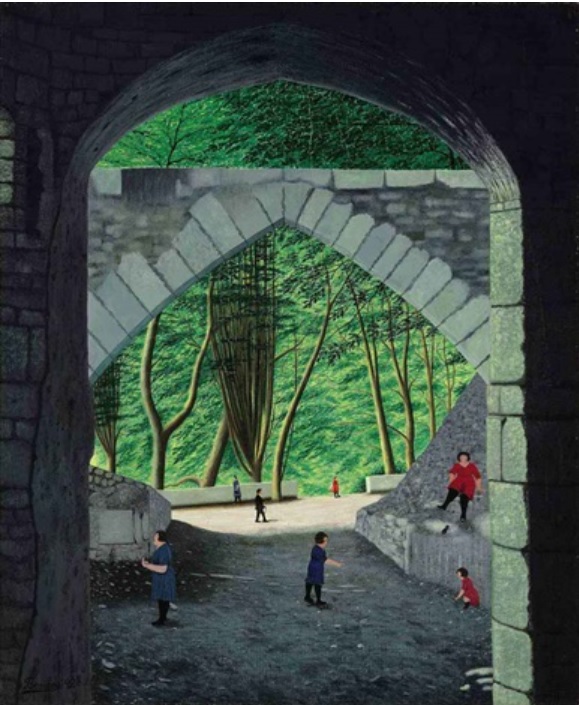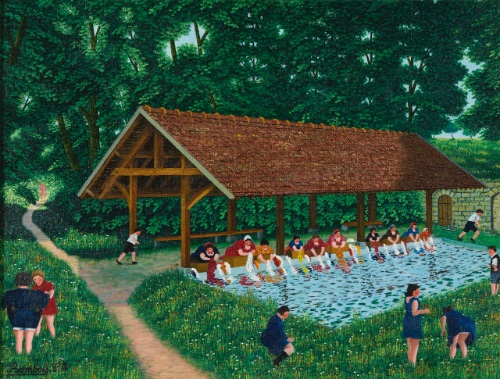Camille Bombois
|||||||||||
(Venarey-Les Laumes, 1883 – Paris, 1970)
The son of a boatman, Camille Bombois tried out several professions, such as farmhand, circus fighter or bobbin winder, before fully committing his life to becoming a painter.
He moved to Paris in 1907 and decided, after the first World War, to exhibit his paintings on the streets of Montmartre. The journalist Noël Bureau was struck by his art and published some of his paintings in the Rythme & Synthèse magazine. He was then discovered by the German collector and art dealer Wilhelm Uhde who bought a large part of his production.
In 1928, Bombois exhibited at the Quatre-Chemins Gallery alongside Bauchant, Jean Eve, Rimbert, Henri Rousseau, Séraphine Louis, and Louis Vivin, and participated in 1932 in the “Les Primitifs Modernes” – “The Modern Primitives” – exhibition.
As his reputation grew, he was invited in 1937 to exhibit at the Maîtres populaires de la réalité – Popular Masters of Reality – exhibition. After the war, his renown became international and the MoMa bought some of his paintings.
As naïve painter, Camille Bombois portrays life with a profusion of shapes and volumes; he is a true modeller of space and dynamic practitioner of his art. The themes that we find addressed throughout his paintings focus mainly on his wife, but also landscape, still life and the circus world. Camille Bombois paints his memories with force and precision in a drive to reflect his own reality.
“Camille Bombois embraces life with energetic virility and passionate sensuality”, Wilhem Uhde.

Au cirque forain, 1928
Huile sur toile
73.6 x 57.8 cm

Jeux d'enfants sous la voûte, circa 1935
Huile sur toile
65 x 54 cm

Les lavandières du village, circa 1930
Huile sur toile
49 x 64.8 cm


